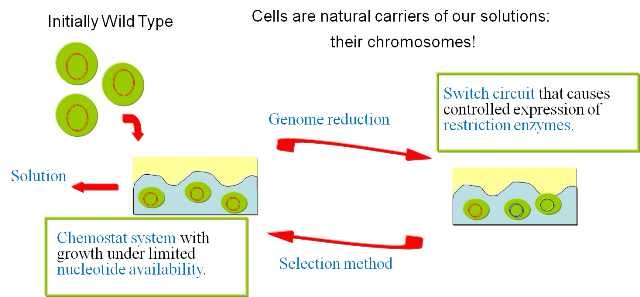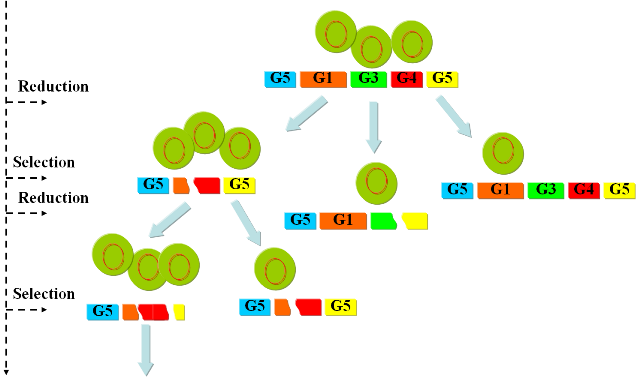Team:ETH Zurich/Project/Approach
From 2008.igem.org
(→Our Approach) |
(→Our Approach) |
||
| Line 13: | Line 13: | ||
== Our Approach == | == Our Approach == | ||
| - | We are following an approach based on random genome deletions and a designed selection mechanism to reach our goal. As mentioned in the [[Team:ETH Zurich/Project/Motivation|Motivation]] section, we postulate that random disruption of genes combined with an evolutionary approach will allow us to dramatically reduce the genome size of an organism. | + | We are following an approach based on random genome deletions and a designed selection mechanism to reach our goal. As mentioned in the [[Team:ETH Zurich/Project/Motivation|Motivation]] section, we postulate that a random disruption of genes combined with an evolutionary approach will allow us to dramatically reduce the genome size of an organism. |
| - | In order to prove the viability of the concept, we have developed a series of models and of biological experiments | + | In order to prove the viability of the concept, we have developed a series of models and of biological experiments that are introduced in this section. For details on the results of the single steps we refer to the specific sections in the [[Team:ETH Zurich/Wetlab/Overview|Wetlab]] and the [[Team:ETH Zurich/Modeling/Overview|Modeling]]sections. Figure 1 gives an overview of the developed system and illustrates the final experimental setup. |
Revision as of 01:09, 30 October 2008
|
Our ApproachWe are following an approach based on random genome deletions and a designed selection mechanism to reach our goal. As mentioned in the Motivation section, we postulate that a random disruption of genes combined with an evolutionary approach will allow us to dramatically reduce the genome size of an organism. In order to prove the viability of the concept, we have developed a series of models and of biological experiments that are introduced in this section. For details on the results of the single steps we refer to the specific sections in the Wetlab and the Modelingsections. Figure 1 gives an overview of the developed system and illustrates the final experimental setup.
See the chemostat model section for a detailed description of the selection process. a) .. excision of genomic sequences by restriction enzymes can be performed within the living cell; b) .. fragmented genomic DNA can be ligated inside the living cell by simultaneous expression of T4 ligase; c) .. pulse generators that produce pulses of protein expression of variable length terminated by induction with a second compound can be devised both on the transcriptional as well as on the translational level; d) .. cells with optimized growth and reproduction can be selected by competition inside chemostat cultures. Random walk towards a minimal genome |
 "
"

